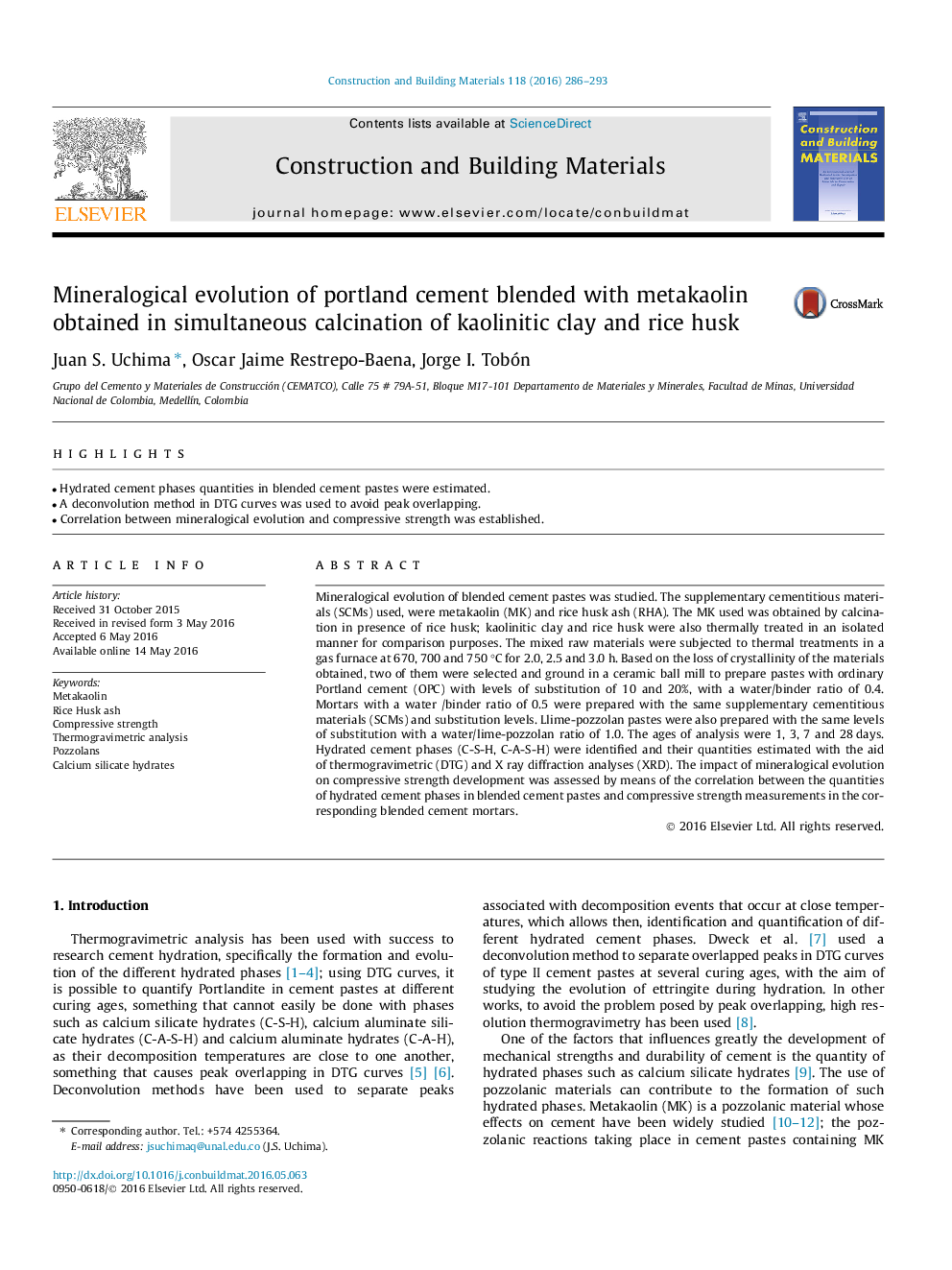| Article ID | Journal | Published Year | Pages | File Type |
|---|---|---|---|---|
| 255905 | Construction and Building Materials | 2016 | 8 Pages |
•Hydrated cement phases quantities in blended cement pastes were estimated.•A deconvolution method in DTG curves was used to avoid peak overlapping.•Correlation between mineralogical evolution and compressive strength was established.
Mineralogical evolution of blended cement pastes was studied. The supplementary cementitious materials (SCMs) used, were metakaolin (MK) and rice husk ash (RHA). The MK used was obtained by calcination in presence of rice husk; kaolinitic clay and rice husk were also thermally treated in an isolated manner for comparison purposes. The mixed raw materials were subjected to thermal treatments in a gas furnace at 670, 700 and 750 °C for 2.0, 2.5 and 3.0 h. Based on the loss of crystallinity of the materials obtained, two of them were selected and ground in a ceramic ball mill to prepare pastes with ordinary Portland cement (OPC) with levels of substitution of 10 and 20%, with a water/binder ratio of 0.4. Mortars with a water /binder ratio of 0.5 were prepared with the same supplementary cementitious materials (SCMs) and substitution levels. Llime-pozzolan pastes were also prepared with the same levels of substitution with a water/lime-pozzolan ratio of 1.0. The ages of analysis were 1, 3, 7 and 28 days. Hydrated cement phases (C-S-H, C-A-S-H) were identified and their quantities estimated with the aid of thermogravimetric (DTG) and X ray diffraction analyses (XRD). The impact of mineralogical evolution on compressive strength development was assessed by means of the correlation between the quantities of hydrated cement phases in blended cement pastes and compressive strength measurements in the corresponding blended cement mortars.
